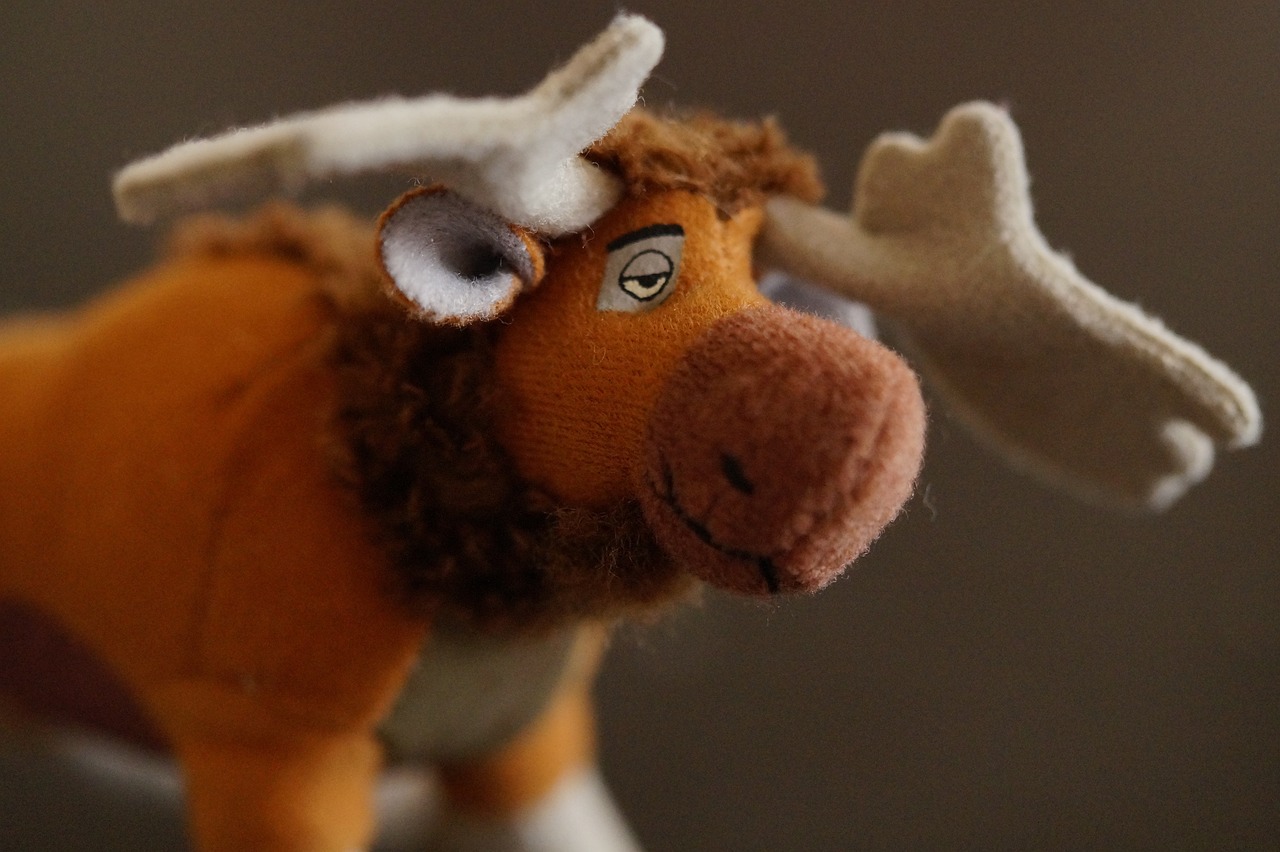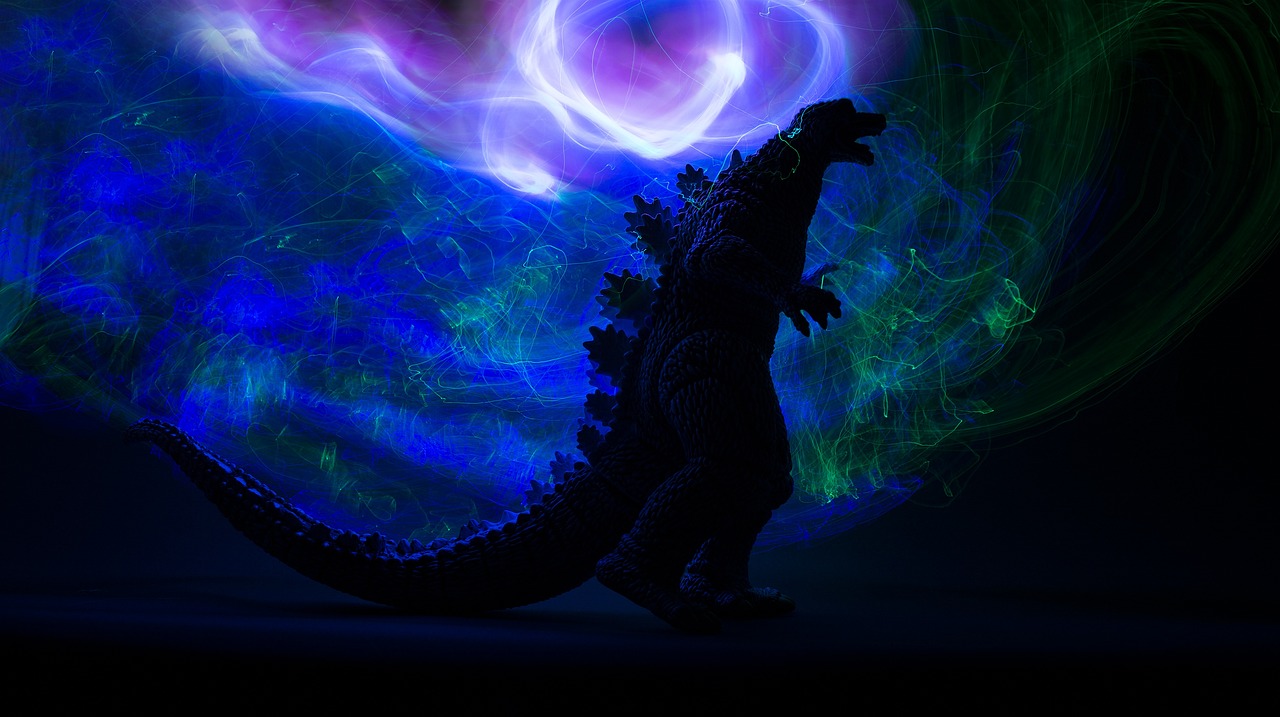Creating Comic Strips: Writing Crafts for Kids
Welcome to the vibrant world of comic strips, where imagination knows no bounds! Comic strips are not just a fun way to tell stories; they are a fantastic medium for kids to express their creativity, share their thoughts, and even learn valuable skills. Imagine a world where your characters jump off the page, where every panel tells a story, and where laughter and excitement come alive through illustrations. This article explores the exciting world of comic strip creation, offering engaging techniques and tips for kids to express their creativity through storytelling and illustration.
Before diving into the creative process, it's essential to grasp the fundamental elements of comic strips. At the heart of every comic strip are panels, characters, and dialogue. Panels are like windows into the story, each one capturing a moment in time. Characters are the lifeblood of your comic; they carry the narrative and connect with the reader. Dialogue, on the other hand, is what brings these characters to life, allowing them to converse and express emotions. By mastering these elements, kids can craft a compelling narrative that captivates their audience.
Generating unique story ideas can sometimes feel like trying to catch smoke with your bare hands! But fear not, as there are effective brainstorming techniques that can help kids unleash their creativity. Start by encouraging them to think about their favorite stories or characters. What do they love about them? What if they could create a new adventure for these characters? Another fun technique is to use mind mapping, where kids jot down their ideas and connect them visually. This can spark new thoughts and lead to exciting plot twists. Remember, the more outrageous the idea, the better! No idea is too silly in the brainstorming phase.
Once the ideas start flowing, it's time to dive deeper into character development. Creating memorable characters is crucial for driving the story forward in a comic strip. Ask kids to think about their characters' traits, backgrounds, and motivations. What makes them unique? What challenges do they face? For instance, a shy character might struggle to speak up, while a brave one might leap into action at the first sign of trouble. This depth adds richness to the narrative and makes the characters relatable. To help visualize this, kids can create a character profile that includes details like name, age, interests, and a fun fact!
Now that the characters are fleshed out, it's time to think about their visual design. Kids can learn tips on how to visually design characters that reflect their personalities. For example, a character who loves nature might wear earthy colors and carry a backpack filled with plants. This visual representation makes them relatable and engaging for readers of all ages. Encourage kids to experiment with different styles and expressions to find what best suits their characters. A character sketch can be a great way to visualize their ideas before finalizing the design.
Don't forget about the side characters! Understanding the importance of side characters in comic strips can greatly enhance the main storyline. These characters can provide depth, humor, and even conflict to the narrative. For instance, a quirky best friend might offer comic relief, while a rival could create tension. By incorporating side characters, kids can enrich their stories and make them more dynamic. Think of them as the spices that elevate a dish—without them, the story might feel flat!
Now that we have our characters, it's time to delve into plot structuring. Every great story has a clear setup, conflict, and resolution. The setup introduces the characters and their world, while the conflict presents a challenge that needs to be overcome. Finally, the resolution ties everything together, providing closure. Kids can outline their comic strip by creating a simple story arc to ensure a coherent and exciting story flow. This structure will keep readers engaged and eager to turn the page.
With the story in place, it's time to bring it to life through illustration. Uncovering various illustration techniques can help kids make their comic strips visually appealing. From dynamic poses to expressive facial expressions, every detail counts. Encourage them to use action lines to convey movement and energy in their drawings. Additionally, they can experiment with different perspectives to add depth to their scenes. Remember, the goal is to create a visual narrative that complements the written story!
Color is a powerful tool in comic strip creation. Learning how to use color effectively can influence the mood and tone of a comic strip dramatically. Bright colors can evoke feelings of joy and excitement, while darker shades might create a sense of mystery or tension. Encourage kids to think about the emotions they want to convey with their color choices. A color palette can be created beforehand to ensure consistency throughout the comic.
Lastly, let’s talk about the role of text and dialogue in comic strips. Writing engaging speech bubbles and captions that complement the artwork is crucial. The dialogue should feel natural and reflect the characters' personalities. Kids can practice writing dialogue that sounds like real conversations, filled with emotion and humor. Remember, the text should enhance the visuals, not overpower them. A well-placed caption can add layers of meaning to a scene, making it even more impactful.
- What age is appropriate for kids to start creating comic strips? Generally, kids can start creating comic strips as early as 6-7 years old, depending on their interest and skill level.
- Do kids need to be good at drawing to create comic strips? Not at all! While drawing skills can enhance a comic strip, creativity and storytelling are far more important.
- How can parents support their kids in comic strip creation? Parents can encourage kids by providing materials, offering feedback, and even participating in the creative process together!

Understanding Comic Strip Basics
Creating comic strips is an exhilarating journey that combines storytelling with visual artistry. At its core, a comic strip is a series of images arranged in panels, each telling a part of the story. These panels are like windows into a different world, allowing readers to immerse themselves in the characters' adventures. To truly grasp the essence of comic strips, it's essential to understand the fundamental components that make them tick.
First and foremost, let's talk about panels. Panels are the building blocks of comic strips. They frame the action and dictate the pace of the story. A well-placed panel can create suspense or humor, guiding the reader's eye and emotions. Think of panels as the beats in a song; they set the rhythm of your narrative. Typically, comic strips use a variety of panel sizes and shapes to convey different moods and moments. For instance, a large panel might signify a dramatic revelation, while smaller panels can quicken the pace of a scene.
Next up are the characters. Every great comic strip needs memorable characters that resonate with the audience. These characters should have distinct personalities, quirks, and motivations that drive the story forward. Imagine your character as a friend; the more relatable they are, the more invested your readers will be in their journey. It's crucial to flesh out their backgrounds and traits, allowing readers to connect on a deeper level. A character’s design should also reflect their personality, which brings us to the next element.
Dialogue plays a pivotal role in comic strips. It’s not just about what characters say, but how they say it. Dialogue should feel natural and fit the character’s voice. Using speech bubbles effectively can enhance the storytelling. For example, a character who is excited might have a jagged speech bubble, while a calm character might have a smooth, rounded one. This visual cue adds another layer to your storytelling, making it more engaging for readers.
When crafting your comic strip, keep in mind the importance of visual storytelling. The combination of images and text should work in harmony to create a seamless narrative. This means that every element, from the layout of panels to the expressions on characters' faces, should contribute to the overall story. A well-designed comic strip can convey emotions and actions without needing extensive text, allowing readers to interpret the story in their own way.
To summarize, understanding the basics of comic strips involves mastering the art of panels, characters, and dialogue. Each component plays a crucial role in creating an engaging and entertaining narrative. By focusing on these fundamentals, young creators can unleash their imagination and bring their stories to life in vibrant and dynamic ways.
- What age group is best for creating comic strips? Kids aged 8-14 typically enjoy creating comic strips, but anyone with a passion for storytelling can give it a try!
- Do I need to be good at drawing to create a comic strip? Not necessarily! While drawing skills help, the most important part is telling a good story. Stick figures can be just as effective!
- How can I improve my comic strip writing? Practice regularly, read a variety of comics, and seek feedback from friends or family. The more you write, the better you’ll get!

Brainstorming Ideas
Brainstorming is like opening a treasure chest filled with possibilities, especially when it comes to creating comic strips! For kids, this process can be both fun and liberating, allowing their imaginations to run wild. To kick things off, it's important to create a comfortable environment where ideas can flow freely. Encourage kids to think outside the box and remind them that no idea is too silly or outrageous. After all, some of the best comic strips come from the most unexpected concepts!
One effective brainstorming technique is the mind mapping method. This involves starting with a central idea—like "superheroes" or "adventure in space"—and branching out to related themes, characters, or plot points. By visually organizing thoughts, kids can see how different ideas connect, which often leads to exciting storylines. For example, from the central idea of "superheroes," they might branch out to include side characters like a quirky sidekick, a villain with a funny backstory, or even a pet that has superpowers!
Another approach is to use prompts. These can be simple phrases or questions that spark creativity. Here are a few examples:
- What if your pet could talk?
- Imagine a world where everyone has a superpower—what would yours be?
- What happens when a villain accidentally saves the day?
These prompts can help kids think creatively and encourage them to explore different scenarios. It’s like throwing a pebble into a pond and watching the ripples spread out; each idea can lead to another, creating a whole world of storytelling possibilities!
Furthermore, collaboration can be a powerful tool in brainstorming. Encourage kids to work together, bouncing ideas off one another. This not only generates a wider variety of concepts but also fosters teamwork and communication skills. Imagine a group of friends sitting together, each contributing their unique ideas—one might suggest a setting, while another comes up with a hilarious character. Together, they can weave a story that’s richer and more engaging than any single person could create alone.
Lastly, don’t forget to keep a journal or sketchbook handy! Kids can jot down their ideas or doodle characters whenever inspiration strikes. This not only helps keep track of thoughts but also allows them to revisit and refine their concepts later. It’s like having a personal treasure map for their comic strip journey!
In summary, brainstorming ideas for comic strips is all about unleashing creativity and having fun. By using techniques like mind mapping, prompts, collaboration, and keeping a journal, kids can turn their imaginative thoughts into captivating stories. Remember, the sky's the limit when it comes to creativity—so let those ideas soar!
Q: How can I encourage my child to brainstorm ideas for their comic strip?
A: Start by creating a relaxed environment and using fun prompts or games to ignite their imagination. Encourage them to think freely without judgment.
Q: What if my child feels stuck during the brainstorming process?
A: Suggest taking a break or switching to a different activity. Sometimes stepping away can help clear the mind and lead to new ideas.
Q: Are there specific tools or materials that can help with brainstorming?
A: Yes! Mind mapping software, sketchbooks, and even simple sticky notes can be great tools for organizing thoughts and ideas visually.

Character Development
Creating memorable characters is like crafting the heart and soul of your comic strip. These characters are not just figures on a page; they are the driving force behind your story, making it relatable and engaging for your audience. To develop characters that leap off the page, start by considering their traits, backgrounds, and motivations. Think of your characters as real people with dreams, fears, and quirks that make them unique. For instance, imagine a shy kid who dreams of becoming a superhero. This character's journey could resonate with many readers who have felt like underdogs at some point in their lives.
When brainstorming character traits, ask yourself questions like: What makes this character tick? What are their strengths and weaknesses? How do they react under pressure? These questions can help you flesh out your characters and give them depth. For example, a character who’s overly confident might face a significant challenge that forces them to confront their own limitations, creating an arc that keeps readers invested.
Next, consider the background of your characters. Where do they come from? What experiences have shaped them? A character's history can add layers to their personality and influence their decisions throughout the story. For instance, a character raised in a bustling city might have a different worldview than one raised in a quiet, rural town. This contrast can lead to interesting dynamics and conflicts between characters, enriching your narrative.
Another crucial aspect of character development is understanding your characters' motivations. What do they want, and what are they willing to do to achieve it? Motivations drive the plot and can lead to compelling conflicts. Perhaps your superhero character wants to save the day, but they also struggle with the fear of failure. This internal conflict can create tension and keep readers on the edge of their seats, wondering how the character will overcome their fears.
To summarize, character development is essential for creating engaging comic strips. Here’s a quick recap of key elements to consider:
- Traits: Define what makes your character unique.
- Background: Consider their history and how it shapes their actions.
- Motivations: Understand what drives your character and creates conflict.
Don’t forget to let your characters evolve throughout the story! Just like real people, characters can grow and change, which can lead to exciting plot twists and resolutions. So, take the time to dive deep into your characters' psyches, and watch as your comic strip transforms into a vibrant tapestry of storytelling that captivates your audience.
1. How do I create a relatable character?
To create a relatable character, focus on their emotions, struggles, and aspirations. Make them face challenges that readers can identify with, allowing for a deeper connection.
2. What if I have too many characters?
If you find yourself with too many characters, prioritize those who are essential to the plot. Consider merging minor characters or cutting those who don’t serve the story’s purpose.
3. How can I make my characters memorable?
Give your characters unique traits, catchphrases, or visual elements that stand out. Engaging backstories and clear motivations also help in making them unforgettable.

Designing Characters
When it comes to for comic strips, the goal is to create figures that leap off the page and resonate with readers. Think of your characters as the heart and soul of your story; they are the ones who will carry the narrative forward, evoke emotions, and, most importantly, connect with your audience. So, how can you ensure that your characters are not just visually appealing but also deeply relatable?
First and foremost, consider the personality traits of your characters. Are they adventurous and bold, or shy and introspective? Each trait can be reflected in their appearance. For example, a character who is always on the go might have messy hair and a casual outfit, while a more meticulous character might sport a neat hairstyle and formal attire. It's amazing how much you can convey through simple visual cues!
Next, think about the background of your characters. Where do they come from? What experiences have shaped them? Adding layers to your character's history can make them more three-dimensional and relatable. For instance, a character who has faced challenges may have a determined look in their eyes, while one who has had a carefree upbringing might have a more playful expression. These subtle differences can significantly enhance your storytelling.
Don’t forget about motivations! What drives your characters? Are they on a quest for adventure, seeking to solve a mystery, or simply trying to fit in? Understanding their motivations will help you design their looks and expressions accordingly. A character who is on a mission might have a focused gaze, while a character who is indecisive may appear more uncertain or confused.
Now, let’s talk about the visual aspects. Here are some tips to help you design characters that truly reflect their personalities:
- Facial Expressions: Use a variety of expressions to show how your characters feel in different situations. A surprised character might have wide eyes and raised eyebrows, while a confident character could have a smirk.
- Body Language: The way a character stands or moves can say a lot about their personality. A relaxed character may have an open posture, whereas a tense character might be hunched over.
- Color Palette: Colors can evoke emotions. Bright colors can signify happiness or energy, while darker shades might convey seriousness or sadness. Choose a color scheme that matches your character's traits.
Finally, consider the style of your comic strip. Are you aiming for a cartoonish look, or something more realistic? The style will influence how you design your characters, from the proportions of their bodies to the details in their clothing. Always keep your target audience in mind; younger readers may prefer more exaggerated features, while older readers might appreciate a more nuanced design.
In conclusion, character design is an exciting blend of creativity and storytelling. By paying attention to personality traits, backgrounds, motivations, and visual elements, you can create characters that are not only memorable but also integral to your comic strip's narrative. So grab your sketchpad, unleash your imagination, and let your characters come to life!
Q: How do I come up with unique character ideas?
A: Start by brainstorming different personality traits and backgrounds. Combine elements from people you know or even create characters based on your favorite stories. Don't be afraid to mix and match until something clicks!
Q: What if I struggle with drawing?
A: Drawing takes practice! Focus on simple shapes and gradually add details. You can also use reference images or online tutorials to improve your skills. Remember, the most important thing is to have fun!
Q: Can I use real people as inspiration for my characters?
A: Absolutely! Many artists draw inspiration from real-life individuals. Just remember to add your unique twist to make them fit into your comic's world.

Creating Side Characters
When it comes to crafting a comic strip, the main character often steals the spotlight, but let's not overlook the magic of side characters. These supporting players can add layers of depth, humor, and intrigue to your story. Think of them as the seasoning in a delicious dish; while the main character is the meat, side characters bring out the flavors and make everything more exciting!
So, how do you go about creating these delightful side characters? First, consider their role in the story. Are they the loyal friend who provides comic relief? Or perhaps the quirky neighbor who adds an unexpected twist? Each side character should have a distinct purpose that complements the main character’s journey. For example, if your hero is serious and focused, a goofy sidekick can provide a much-needed contrast, allowing for some hilarious interactions.
Next, think about their traits. What makes them unique? Maybe they have a peculiar obsession, like collecting rubber ducks, or a catchphrase that makes everyone chuckle. These quirks not only make them memorable but also help to create a more engaging narrative. A well-developed side character might even have their own mini-story arc, which can enrich the overall plot. Imagine a side character who starts as a timid wallflower but gradually gains confidence through their adventures alongside the main character. This transformation can resonate with young readers, teaching them valuable lessons about friendship and bravery.
It’s also essential to give your side characters some background. Where do they come from? What are their dreams and fears? This backstory doesn’t have to be elaborately detailed, but a few key points can make your characters feel more real. For instance, a side character who grew up in a bustling city might have a different perspective on life than one raised in a quiet village. These backgrounds can influence how they interact with the main character and the challenges they face together.
Now, let’s talk about how side characters can enhance the main storyline. They can introduce conflict or serve as a source of wisdom. Imagine a wise old neighbor who gives the main character advice just when they need it the most. Or consider a rival character who challenges the protagonist, pushing them to grow and evolve. The possibilities are endless!
In conclusion, creating side characters is a vital part of comic strip storytelling. They add richness and flavor, making your narrative more engaging and enjoyable. So, the next time you sit down to brainstorm, don’t forget about these fabulous supporting characters. They might just steal the show!
- Why are side characters important in comic strips?
Side characters provide depth, humor, and additional perspectives that enhance the main storyline, making the narrative more engaging. - How can I make my side characters memorable?
Give them unique traits, quirks, and a bit of backstory to make them relatable and interesting to readers. - Can side characters have their own story arcs?
Absolutely! Developing a side character's journey can add richness to your comic strip and resonate with readers.

Plot Structuring
When it comes to creating comic strips, is like the backbone of a great story. Just as a house needs a solid foundation to stand tall, your comic strip needs a well-thought-out plot to keep readers engaged from the first panel to the last. So, how do you go about building this essential structure? Let’s break it down!
The first step in plot structuring is the setup. This is where you introduce your main characters, the setting, and the initial situation. Think of it as the opening scene of a movie; it sets the stage for everything that follows. For example, if your comic strip is about a young wizard, you might start with him in his cluttered room, surrounded by magical books and potions, dreaming of his first adventure.
Next comes the conflict, which is the heart of your story. This is where the action picks up and challenges arise. Without conflict, there’s no story! Maybe our young wizard faces a problem, like a mischievous dragon stealing his spellbook. This conflict drives the plot forward and keeps readers on the edge of their seats, eager to see how it unfolds.
Finally, we reach the resolution. This is where everything comes together, and the conflict is resolved. It’s like the satisfying conclusion of a mystery novel when all the pieces fall into place. In our wizard’s tale, perhaps he cleverly outsmarts the dragon and retrieves his spellbook, learning valuable lessons along the way. The resolution not only wraps up the story but also leaves readers feeling fulfilled.
To visualize this structure better, let’s look at a simple table:
| Plot Element | Description |
|---|---|
| Setup | Introduces characters, setting, and initial situation. |
| Conflict | The main challenge or problem that drives the story. |
| Resolution | The conclusion where the conflict is resolved. |
By following this structure, kids can create comic strips that are not only entertaining but also easy to follow. Remember, every plot should have a beginning, middle, and end. It’s like telling a joke; you need a setup, a punchline, and a conclusion for it to land well!
Additionally, incorporating twists and surprises can elevate the plot even further. Think of it as seasoning in a dish; a little surprise can make the story more flavorful and memorable. For example, what if the dragon turns out to be friendly? Or what if the spellbook contains a secret map leading to a treasure? Such elements can add depth and excitement to the narrative.
In conclusion, mastering plot structuring is crucial for young comic creators. By focusing on the setup, conflict, and resolution, along with the potential for surprises, kids can craft engaging stories that resonate with their audience. So, grab those pencils and start plotting your next comic strip adventure!
Q: What is the most important part of a comic strip?
A: While all parts are important, the conflict is crucial as it drives the story and keeps readers engaged.
Q: How can I make my characters more relatable?
A: Give them unique traits and backgrounds that readers can connect with. This makes their journey more impactful.
Q: Do I need to be good at drawing to create a comic strip?
A: Not necessarily! While good illustrations can enhance your comic, a strong story and characters can shine through even with simple drawings.

Illustration Techniques
When it comes to creating comic strips, play a pivotal role in capturing the reader's imagination. The beauty of comic strips lies not just in the story they tell, but in how they visually communicate that story. Think of it as a dance between words and images, where each step complements the other. So, what are some effective techniques that budding artists can use to make their comic strips pop?
First and foremost, line work is essential. The way you draw your lines can set the tone for your entire comic strip. Are your lines thick and bold, suggesting action and excitement? Or are they thin and delicate, hinting at a more whimsical or emotional journey? Experimenting with different line weights can add depth and character to your illustrations. Additionally, consider using varying styles—like hatching or stippling—to create texture and interest.
Next, let's talk about color. Color is more than just a visual treat; it evokes emotions and can dramatically change the mood of your comic strip. For instance, warm colors like reds and yellows can create feelings of excitement or anger, while cool colors like blues and greens can convey calmness or sadness. A well-thought-out color palette can guide the reader through the story, emphasizing key moments and enhancing the overall narrative. Don't be afraid to play with contrasting colors for dramatic effects or monochromatic schemes for a more subdued feel.
Another crucial aspect is the composition of your panels. The arrangement of elements within each panel can direct the reader's eye and influence their experience. Think of each panel as a mini-stage where you control the action. Use the rule of thirds to create a balanced composition, or try out dynamic angles to add excitement. For example, a low-angle shot can make a character look powerful, while a high-angle shot can make them appear vulnerable. Remember, the way you compose your panels can heighten the tension or create a sense of calm.
Don't forget about expressive characters. The way your characters are illustrated can convey a wealth of information without a single word. Facial expressions and body language are key to storytelling. A simple raised eyebrow or a slumped posture can tell the reader a lot about what a character is feeling. Encourage kids to practice drawing their characters in various emotional states—happy, sad, angry, surprised—so they can effectively communicate those feelings through their illustrations.
Finally, let's touch on the importance of backgrounds. While characters are at the forefront of your comic strip, backgrounds provide context and depth. A well-drawn background can transport readers to different settings, whether it’s a bustling city street or a serene forest. However, it's essential to strike a balance—too much detail can distract from the characters, while too little can leave the reader feeling lost. Aim for backgrounds that complement your characters and enhance the story without overshadowing the main action.
In conclusion, mastering illustration techniques is all about experimentation and finding your unique style. Encourage kids to try different methods, learn from their mistakes, and most importantly, have fun with it! After all, the world of comic strips is a playground for creativity where imagination knows no bounds.
- What materials do I need to start creating comic strips? You can start with basic materials like paper, pencils, and pens. As you progress, you might want to explore digital tools or markers for coloring.
- How can I improve my drawing skills? Practice is key! Try drawing every day, study your favorite comic strips, and don't hesitate to take art classes or watch online tutorials.
- What software can I use for digital comic creation? There are several great options, including Adobe Photoshop, Clip Studio Paint, and free tools like Krita or Medibang Paint.

Using Color Effectively
When it comes to creating comic strips, the use of color is not just about making things look pretty; it's about conveying emotions, setting the mood, and enhancing the storytelling experience. Think of color as the seasoning in a dish; too little can make it bland, while too much can overwhelm the palate. The right balance can elevate your comic strip from good to unforgettable!
First and foremost, consider the emotional impact of colors. Different colors evoke different feelings. For instance, warm colors like red and orange can create a sense of excitement or urgency, while cool colors like blue and green often bring calmness or sadness. As a budding comic artist, you want to use this to your advantage. Imagine a scene where a character is feeling down; using cooler tones can visually cue the reader into their emotional state. Conversely, if the character is in a joyous moment, vibrant yellows and reds can amplify that happiness.
Next, think about color palettes. Using a limited color palette can create a cohesive look throughout your comic strip. For example, you might choose a palette of pastel colors for a light-hearted story, or darker shades for a more serious theme. This consistency helps the reader to feel a sense of unity in your work. A great way to choose a color palette is to look at existing comic strips or illustrations that inspire you. You can even create a mood board with swatches of colors that resonate with the story you want to tell.
Furthermore, consider using color to highlight important elements in your comic. For example, if you want to draw attention to a particular character or object, using a contrasting color can make it pop against the background. This technique is similar to using a spotlight on a stage; it naturally directs the audience's attention to where you want it. Just be careful not to overdo it—too many contrasting colors can create confusion rather than clarity!
Lastly, don't forget the importance of background colors. The background sets the scene for your characters and can significantly affect the overall tone of your comic. A bright, sunny background can create a cheerful atmosphere, while a dark, stormy sky can add tension and drama. Think of your background as the stage where your characters perform; it should enhance the story rather than distract from it.
In summary, using color effectively in your comic strips is about more than just aesthetics. It's a powerful storytelling tool that can evoke emotions, create atmosphere, and guide your readers' attention. So, grab your color palette, let your creativity flow, and watch as your comic strips come to life in vibrant hues!
- What colors should I use for a funny comic strip? Bright, vibrant colors like yellows, pinks, and light blues work well to convey humor and joy.
- How can I choose a color palette for my comic? Look for inspiration in other comics, nature, or art. Create a mood board with colors that resonate with your story.
- Should I use the same colors for all my characters? Not necessarily! Different characters can have distinct color schemes that reflect their personalities.
- Can I use black and white in my comic strips? Absolutely! Black and white can create a dramatic effect and is often used in classic comic art.

Incorporating Text and Dialogue
When it comes to creating comic strips, the magic often lies in the words we choose to accompany our illustrations. Text and dialogue are not just fillers; they are essential components that breathe life into your characters and propel your story forward. Imagine reading a comic strip where the characters are silent. It would be like watching a movie with the sound turned off—visually intriguing, but lacking the emotional punch that dialogue can provide.
One of the first things to consider is the placement of dialogue. Speech bubbles should be positioned strategically to guide the reader's eye naturally across the panels. A common mistake is overcrowding a panel with too much text, which can overwhelm the reader and detract from the artwork. Instead, focus on concise, impactful dialogue that reflects your characters' personalities and drives the narrative. For instance, a witty one-liner can add humor, while a heartfelt confession can deepen emotional engagement.
Moreover, the font style and size of the text can significantly affect how your dialogue is perceived. Using a playful font for a light-hearted character or a bold, jagged font for an angry outburst can visually convey emotions even before the reader finishes the sentence. Don’t shy away from experimenting with different styles—just ensure they remain legible. After all, no one wants to squint at tiny letters or decipher an overly ornate script!
Another critical aspect is the balance between text and imagery. Your illustrations should complement the dialogue, not compete with it. For example, if a character is shouting, a larger speech bubble with jagged edges can visually represent their intensity. Similarly, if a character is whispering, a smaller, softer bubble can create a sense of intimacy. This dynamic interplay between text and visuals can elevate your comic strip from good to extraordinary.
To help illustrate these concepts, consider the following table that outlines different types of speech bubbles and their uses:
| Type of Speech Bubble | Use Case |
|---|---|
| Standard Bubble | Used for regular dialogue. |
| Shouting Bubble | Indicates a character is yelling. |
| Whisper Bubble | For quiet or secretive conversations. |
| Thought Bubble | Represents a character's internal thoughts. |
Finally, don’t forget about captions. These can provide context or narrate events that aren’t directly shown in the panels. Captions can be used to set the scene, provide backstory, or even add humor. Just like dialogue, they should be clear and concise, allowing readers to absorb the information without feeling bogged down.
Incorporating text and dialogue into your comic strip is an art form in itself. It requires a balance of creativity and clarity, ensuring that every word serves a purpose. So, as you embark on your comic creation journey, remember that your characters’ voices are just as important as their visual representations. With thoughtful dialogue and well-placed text, you can create a comic strip that resonates with readers and leaves them eagerly anticipating the next panel.
- What is the best way to write dialogue for comic strips? Keep it concise and true to your character's voice. Use natural speech patterns and avoid overly complex sentences.
- How can I make my speech bubbles more engaging? Experiment with different shapes and sizes to match the tone of the dialogue. Consider using colors that reflect the character's emotions.
- Should I include captions in my comic strip? Yes, captions can provide additional context and enhance storytelling. Just make sure they are clear and add value to the narrative.
Frequently Asked Questions
- What are the basic elements of a comic strip?
The fundamental elements of a comic strip include panels, characters, and dialogue. Panels are the frames that contain the illustrations, characters are the individuals who tell the story, and dialogue is the text that conveys what the characters are saying. Together, these components create an engaging narrative that captures the reader's attention.
- How can kids brainstorm ideas for their comic strips?
Kids can brainstorm ideas by using techniques like mind mapping, drawing inspiration from their favorite books or movies, and even discussing ideas with friends. Encouraging them to jot down any wild or silly thoughts can lead to unique storylines and characters that will captivate their audience.
- What is the importance of character development in comic strips?
Character development is crucial because it helps create memorable and relatable characters. When kids develop their characters' traits, backgrounds, and motivations, they can drive the story forward and make it more engaging. Readers are more likely to connect with characters that have depth and personality.
- How can kids effectively illustrate their comic strips?
Kiddos can bring their comic strips to life by experimenting with different illustration techniques. They can use various tools like pencils, markers, or digital software to create vibrant and dynamic visuals. It's also important to practice drawing their characters in different poses and expressions to capture the right emotions.
- What role does color play in a comic strip?
Color plays a significant role in setting the mood and tone of a comic strip. Different colors can evoke different emotions, so choosing the right palette can enhance storytelling. For instance, warm colors like red and orange can create excitement, while cool colors like blue and green can convey calmness.
- How should dialogue be incorporated into comic strips?
Dialogue should be written in speech bubbles and captions that complement the artwork. It's important to keep the text engaging and concise, allowing the visuals to tell part of the story. Using different fonts or styles can also help convey the characters' emotions and personalities.



















